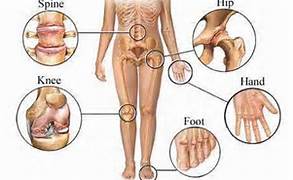What You Need To Know
About Arthritis
About Arthritis

|
Plato |
When you got out of bed this morning, were you pain-free? Or did your hips and knees ache? Did your hands feel stiff when you poured your tea? Many people brush off these kinds of aches and pains, thinking they’re just normal signs of aging. As the years pass, many people find the pain intensifies, and begin to rely on regular doses of Motrin or Tylenol to feel well. Eventually, they may even stop doing the things that give them pain - even their most meaningful and cherished activities, like picking up a grandchild, playing an instrument, or gardening.
As we experience pain and swelling in our fingers, wrists, knees or any joint, it’s easy to jump to the conclusion that our joints are “wearing down” from use, like car parts. We may even think we’re developing arthritis. Arthritis is a joint disorder featuring inflammation. Arthritis is accompanied by joint pain. But our bodies are not made up of mechanical pieces; they are made up of living cells that can actually strengthen and grow when fully nourished and used properly.
There are many types of arthritis (over 100 identified, and the number is growing). Joint pain can flare up for a number of reasons. Sadly, it is estimated that one in five Americans has been diagnosed with some form or arthritis. There are over a hundred different arthritic conditions, rheumatoid arthritis and osteoarthritis being the most well-known.
Scientific research estimated 46 million Americans have some form of arthritis. Osteoarthritis is the most common and is a literal wearing away of the cartilage in the joints. Nearly half of all Americans older than 60, develop osteoarthritis. Together, the many types of arthritis make up the most common chronic illness in the United States.











